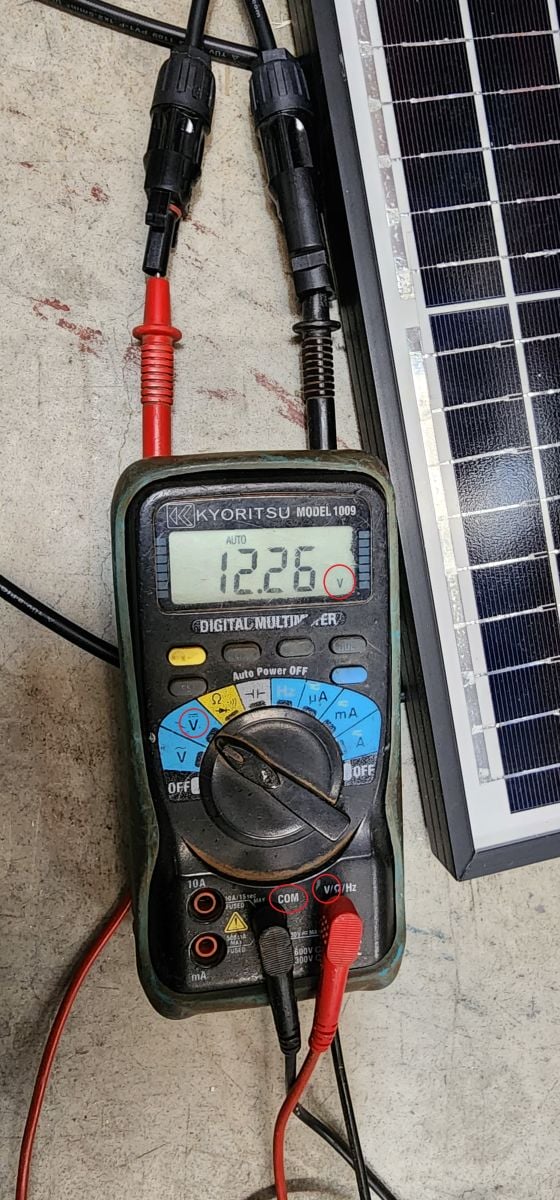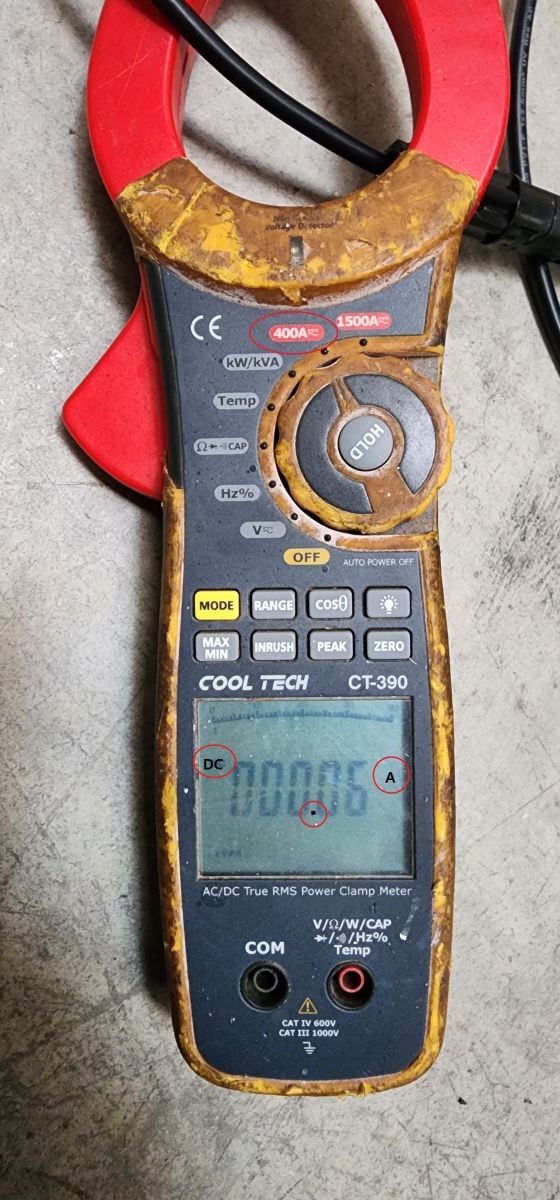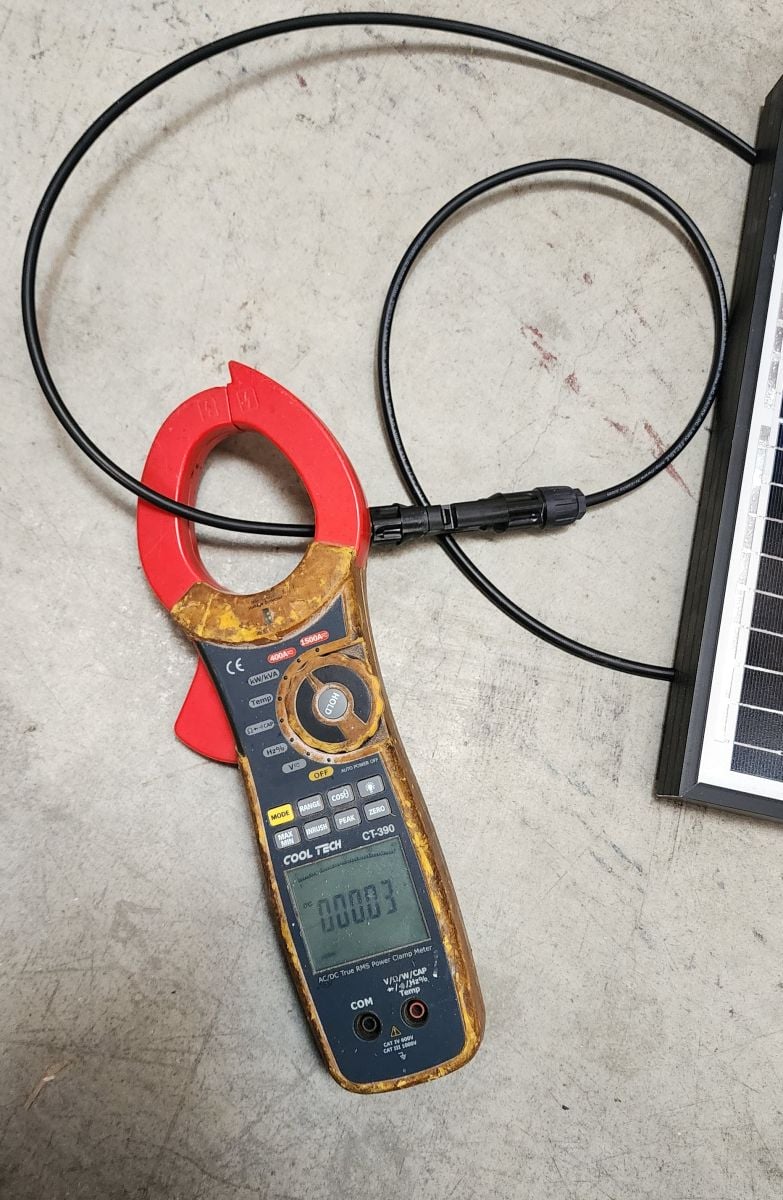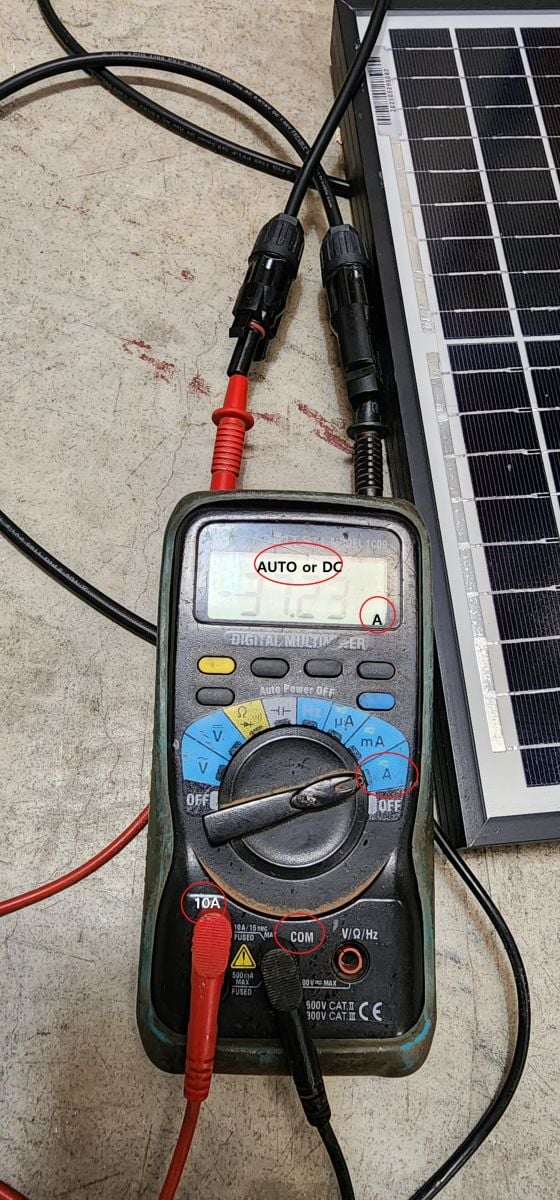How to Test a Solar Panel Output with a Multimeter
Author: Solar 4 RVs
Testing a solar panel is an essential step to ensure its efficiency, reliability, and safety. This technical document outlines the procedures and equipment needed to test a solar panel.
Essential Equipment for Solar Panel Testing:
The following equipment is required to test a solar panel:
-
Multimeter: A device used to measure DC voltage and 10A current
-
Sun: The panel must be tested around midday with no shading on the panel, even small amounts of shade will have a large impact on the output
-
Clampmeter: A device used to measure DC current that "clamps" over the cable
Step-by-Step Procedure for Testing Solar Panels:
The following steps should be followed to test a solar panel:
1. Disconnect the panel from the system so you are left with the two MC4 connectors directly connected to the panel.
2. Measure the open-circuit voltage: Place the solar panel in a well-lit area under the sun and measure the voltage across the solar panel's positive and negative cables using the Multimeter.
This voltage is called the open-circuit voltage (Voc), which is the maximum voltage the solar panel can produce under no-load conditions.
Check the solar panel specifications, you should see somewhere between 80-105% of the Voc value in full sun at midday in summer.
Normally around 21-25V for a 12V solar panel.

 3. If you have a clampmeter, follow this step, if not, move onto step 4.
3. If you have a clampmeter, follow this step, if not, move onto step 4.
Measure the short-circuit current: Connect the solar panel's positive and negative terminals together (short-circuit the panel) and measure the current flowing through the solar panel using a clamp meter.
This current is called the short-circuit current (Isc), which is the maximum current the solar panel can produce under short-circuit conditions.
Ensure the clampmeter is set to DC Amps, and be aware of the decimal point.
Check the solar panel specifications, you should see somewhere between 80-105% of the Isc value in full sun at midday in summer. Normally around 8-10A for a 200W solar panel and 4-5A for a 100W solar panel.
Skip step 4.
 4. Move the black lead on the multimeter to the common slot, and the red lead to the 10A slot. Connect to the positive and negative solar panel cables.
4. Move the black lead on the multimeter to the common slot, and the red lead to the 10A slot. Connect to the positive and negative solar panel cables.
This current is called the short-circuit current (Isc), which is the maximum current the solar panel can produce under short-circuit conditions.
Check the solar panel specifications, you should see somewhere between 80-105% of the Isc value in full sun at midday in summer. Normally around 8-10A for a 200W solar panel and 4-5A for a 100W solar panel.
You have now confirmed the panel operates well. Repeat this step with all panels in the system, once you have a good grasp on the testing technique, testing each panel should only take approximately 2-5 minutes.





























